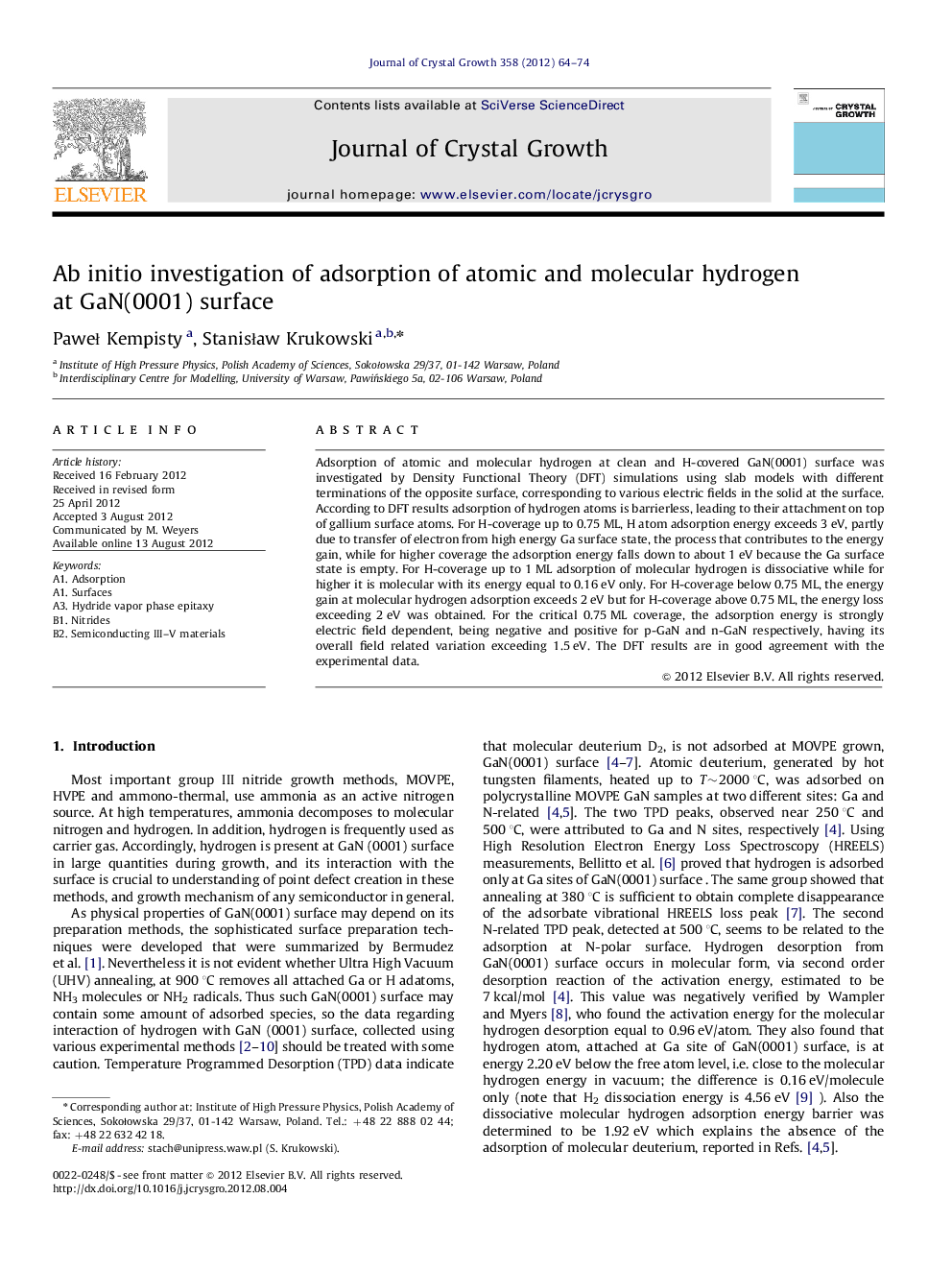| کد مقاله | کد نشریه | سال انتشار | مقاله انگلیسی | نسخه تمام متن |
|---|---|---|---|---|
| 1791508 | 1524471 | 2012 | 11 صفحه PDF | دانلود رایگان |

Adsorption of atomic and molecular hydrogen at clean and H-covered GaN(0001) surface was investigated by Density Functional Theory (DFT) simulations using slab models with different terminations of the opposite surface, corresponding to various electric fields in the solid at the surface. According to DFT results adsorption of hydrogen atoms is barrierless, leading to their attachment on top of gallium surface atoms. For H-coverage up to 0.75 ML, H atom adsorption energy exceeds 3 eV, partly due to transfer of electron from high energy Ga surface state, the process that contributes to the energy gain, while for higher coverage the adsorption energy falls down to about 1 eV because the Ga surface state is empty. For H-coverage up to 1 ML adsorption of molecular hydrogen is dissociative while for higher it is molecular with its energy equal to 0.16 eV only. For H-coverage below 0.75 ML, the energy gain at molecular hydrogen adsorption exceeds 2 eV but for H-coverage above 0.75 ML, the energy loss exceeding 2 eV was obtained. For the critical 0.75 ML coverage, the adsorption energy is strongly electric field dependent, being negative and positive for p-GaN and n-GaN respectively, having its overall field related variation exceeding 1.5 eV. The DFT results are in good agreement with the experimental data.
► Hydrogen adsorption energy depends on hydrogen coverage of GaN(0001) surface.
► Adsorption energy is 3 eV and about 1 eV for coverage below and above 0.75 ML.
► Adsorption of molecular hydrogen is dissociative, for coverage below 1 ML.
► For 0.75 ML coverage, hydrogen adsorption energy changes with the field, by 1.5 eV.
► The hydrogen coverage above 1 ML is extremely difficult to attain.
Journal: Journal of Crystal Growth - Volume 358, 1 November 2012, Pages 64–74